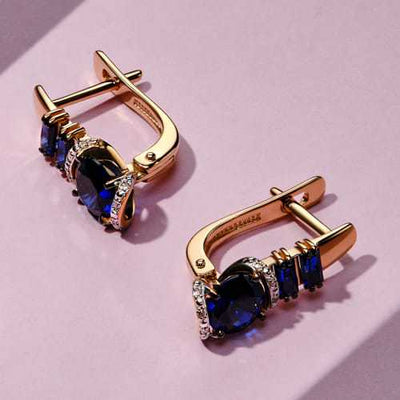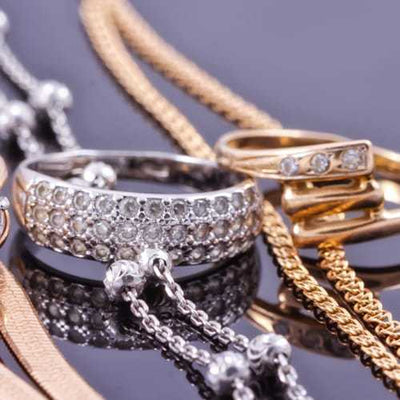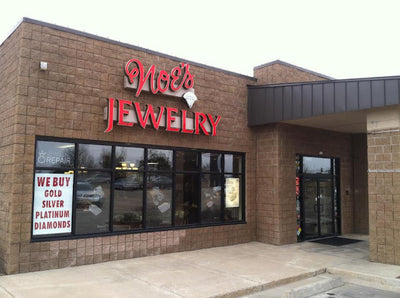What is a Ruby?
Rubies are bright red gemstones that are hard and durable. What many people don’t realize is that rubies are rarer than diamonds. A large, transparent ruby is very rare. Rubies are the red variety of the mineral corundum. Sapphires are another variety of this mineral. This means that rubies are essentially red sapphires. Interestingly enough, corundum is colorless when in its purest form. Trace element chromium is what is responsible for the red color that rubies have.
You may be familiar with rubies, as they are considered the birthstone for July. Often, rubies are used to celebrate 15th and 40th wedding anniversaries.
Types of Rubies
Rubies range in color from bright red to dark reddish-brown, but the preferred color for most customers is a deep blood red color with a slightly blue hue. These are known as “Burmese Rubies” or “Pigeon’s Blood Rubies.” Burma is famous for the production of the finest rubies in the world, but these rubies tend to be on the small side. A large Burmese ruby with no flaws can be worth millions of dollars.
Many rubies in the current market come from Thailand and tend to have a more brownish hue. Often, these rubies are heat treated in an attempt to improve the color and transparency of the stone.
Opaque and semi-opaque rubies don’t have much value, and even though the stones can still be beautiful with inclusions and other opaque qualities, unfortunately, they just aren’t going to possess real value on the market.
Synthetic rubies can be created in a lab. There are several different methods for creating rubies, including flame fusion and the Czochralski process.
There are a variety of other red stones that are often called or confused for rubies. Unfortunately for the consumer, these stones are usually garnet or other stones that should be much cheaper than rubies. Be wary of any stones that aren’t sold by authorized dealers, as you could be spending a lot of money for a garnet, topaz, spinel, quartz, or another gemstone.
Before the late 19th century, it was impossible to tell the difference between rubies and red spinel stones. In fact, it has been discovered that many famous “rubies” are actually red spinel. Even the famous red stone in the centerpiece of the royal crown of England, often called the Black Prince’s Ruby, was discovered to be red spinel.
Where Are Rubies Found?
Like previously mentioned, Burma is a source for beautiful rubies. Often, the most valuable rubies in the world were mined from Burma. However, there are strict trade embargoes against Burma due to human rights violations, so many countries have banned products from Burma.
Bangkok, Thailand, is a major center for ruby production and trade. The Chantaburi Province is an important source of rubies, but these stones tend to have the less desirable brownish hues. Unfortunately, the Thai ruby deposits were exhausted by the 1980s, which is part of the reason that rubies are so rare now.
Fortunately, in 2000, rubies were discovered in Madagascar. The deposits found here were extensive. This discovery has projected the country to becoming a leader in ruby mining. Rubies are also mined in significant amounts in Sri Lanka, Cambodia, India, Vietnam, Tanzania, and Mozambique. Rubies have even been found in the United States in North Carolina.
4 C’s for Rubies
 Just like diamonds, rubies are graded using the four C’s. When it comes to rubies, the most important of the four C’s is color, followed by clarity, cut, and carat.
Just like diamonds, rubies are graded using the four C’s. When it comes to rubies, the most important of the four C’s is color, followed by clarity, cut, and carat.
Color
The most important factor for ruby grading is the color of the stone. The deeper and more intense the red color, the better the grade the stone will receive. For rubies, color is measured using three criteria: hue, tone, and saturation.
The hue of the ruby describes where the stone falls in the spectrum of other colors. Rubies all have a primary and secondary color. The primary color is always red, but the secondary color is usually orange, pink, or purple. The truer the red, the more valuable the ruby.
Secondary colors are very important, however. For example, purple as a secondary color is a good thing, because it makes the red of the ruby appear richer. If you place a ruby with a purple hue in yellow gold, the yellow will neutralize the blue and make the stone look even redder.
The tone of the ruby refers to how light or dark the shade of red appears. Most rubies of high quality will be medium to medium dark in tone. When rubies are too dark, it is hard to make out the color. When rubies are too light, the color is too faint and can even appear pink, which would make it a pink sapphire.
Saturation refers to the depth or intensity of the ruby’s color. The more intense the red color, the more precious the ruby is. A ruby is considered well-saturated if it has a “strong” or “vivid” saturation. Rubies that fluoresce or glow in ultraviolet light can have even greater saturation.
Clarity
Clarity is also extremely important for rubies. Small imperfections in the stones, called inclusions, decrease the clarity grade for rubies. To determine a grade, a gemologist will measure the number, size, location, color, and quality of the inclusions. When looking at inclusions with colored gemstones, gemologists don’t use magnification. Instead, they look for “eye-cleanliness.” Eye-cleanliness refers to how the stone looks when viewed with the naked eye. All natural rubies will have some inclusions, which are known as rutile needles or silk. If there are no inclusions, the gemologist will believe the ruby has been treated or is synthetic.
In rare instances, inclusions can increase the value of a ruby. These inclusions are also asterisms. When asterisms occur, three- or six-point stars are visible in the ruby when viewed under proper lighting.
Cut
Unlike diamonds, rubies are not graded on cut quality, which makes it a lesser factor when determining the value of the stone. With rubies, cut refers to how the stone is faceted, its dimensions, and its symmetry. When cutting rubies, there are four factors that gem cutters keep in mind:
- Maximize color
- Maximize carat weight
- Minimize inclusions
- Cut to the correct shape
Carat
Carat weight works the same for rubies as it does diamonds. The higher the carat weight, the more expensive the stone. This is due to the fact that larger gemstones are rarer than smaller gemstones, and the laws of supply and demand will create a situation in which the rarer the stones, the more valuable they are. However, you should be aware that there are drastic price jumps for rubies at the one-carat, three-carat, and five-carat marks.Caring for Rubies
It is well-known that diamonds are the hardest gemstones. In fact, they have received a nine on the Mohs’ hardness scare. However, most people don’t know that rubies are the second-hardest stones. For this reason, special care doesn’t tend to be required for rubies. Any heavily included or fractured ruby will be less stable and will likely need to be cleaned very carefully.
To clean a ruby, use warm water or detergent and a soft brush to gently clean the stone. Note that rubies often receive oil treatments and cleaning your ruby could remove this oil.
While flawless rubies will stand up to high heat, gems with inclusions could be more vulnerable to damage.
If you are in the market for a ruby piece, consider stopping by Noe’s Jewelry in Raymore, Missouri. You can also give us a call at 816-322-7227.
Check out the other stones in our Gemstone Series Guides:





